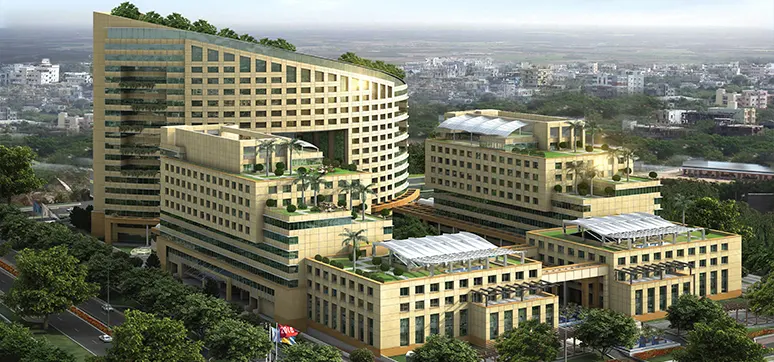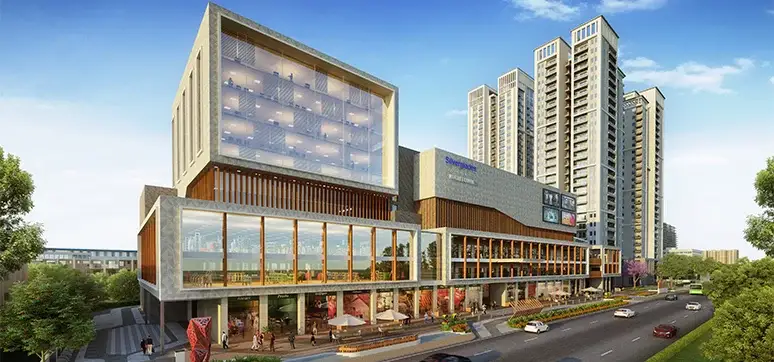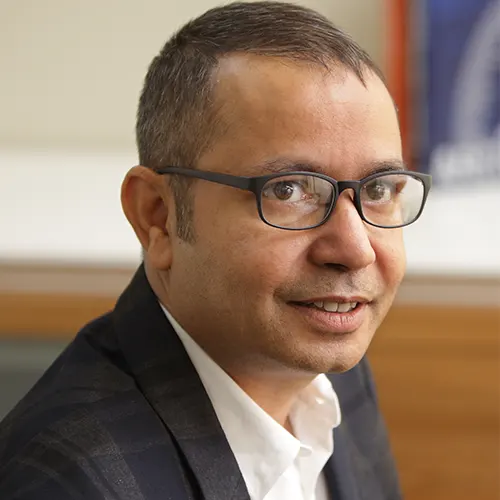Ar. Anoj Tevatia is a Founding Partner of Design Forum International, in a recent interaction he elaborated on his architectural journey of over 25 years, a few turning points in his design career, his views on architecture, some of his completed, ongoing and most challenging projects, the design process for façades and fenestrations, his insights on sustainability in the construction of façades, and more. Here are the excerpts:
Could you tell us about your educational background, career and architectural experience?
I completed my BArch degree from IIT Kharagpur in 1995. In my third year, I started experimenting with professional work outside the academic environment. I would sketch 3D views and perspectives as we didn’t have any software tools at our disposal. Over time, I built up the skill of developing realistic 3D views, which I could apply to opportunities outside the college. These opportunities helped me understand people’s perceptions of architecture and its impact on reality. It led to a deeper understanding of the profession, and I was able to find correlations between my experience and the educational curriculum. Throughout my college life, I actively involved myself in hands-on experiences, which made me realise that ideas are simply ideas until they are executed onground and experienced by the intended user. It is through these interactions with the space, that one learns more about architecture.

What inspired you to pursue a career in Architecture?
Growing up, I picked up sketching from quite early on. Whether it was through crayons on the wall or pencil on paper, I grew up with a fascination for this art form. When it came to choosing a career path, I had initially set out to pursue engineering but eventually decided to combine my two interests and opt for an architectural course.
Tell us about some turning points in your design career.

Some of my first turning points were in college, including a 3D sketch I made for a small commission and a restaurant renovation project in the campus that I headed. Another turning point was the first home that we, as TCS Architects, designed in Janakpuri. It was our first professional assignment. Early on in our journey, we designed a row housing project in Gurgaon. I was involved in the project not only for the architectural scope but also to communicate the image and the impact of the project to the end user. Through the success of this project, we were able to enter the league of architects who were taking on large-format projects. Apart from this, another notable project for us was a resort in Manali. Located on the banks of the Beas river, the project had a fascinating location and allowed us to experiment with the use of stone, glass and wood.
For Design Forum International (DFI), designing and executing Select City Walk was what put us on the map with other larger architectural practices. Another major milestone was the Guwahati International Airport. Around 2012, we ventured into the southern region of India, which was a big step for us. We are currently doing the fourth tallest residential tower in Bangalore. We recently also won a competition for a seven million square feet high-rise residential project based in Chennai.
What type of projects does Design Forum International (DFI) specialise in? What type of services do you offer to your clients?
DFI’s portfolio ranges from retail, group housing, townships and master planning, office towers and workplaces, public infra-structure projects, and institutional buildings. Design Forum International (DFI) is purely an architectural company. We outsource all supporting services such as MEP, landscape, structure, lighting, interior design, etc. However, we offer a single-window solution to our clients by stitching these allied services with an architectural design to offer a holistic solution.
What is your take on sustainable practice in architecture today?
Sustainable practice in architecture means that you have to be a solution provider. Whether it’s public sector buildings or private developer projects, every owner is looking forward to a habitable environment. As architects, we can offer our expertise to transform this intent into a built form. However, if we deviate from that intent, we will be unable to provide a sustainable solution for that project.
For example, in affordable housing, the intent is to come up with a cost-effective yet habitable solution, where people enjoy the space while it also suits their pocket. Architecture is one way to combine various services that add value to the user’s life and provide a well rounded solution.

How would you define your design process for façades and fenestrations in your projects?
Façades and fenestrations are of utmost importance in any built structure, not only for its users but also for the onlookers. The façade of a building belongs to the entire city since they also contribute to the experience of passers-by. Many buildings can sufficiently cater to the functional needs in terms of layout and façade design; however, if they are not at par with aesthetics, it can take away from the value of the project.
In our projects, we aim for good-quality façades, which are determined by three parameters—instant visual appeal, performance and lifespan. In addition, maintenance is an important aspect that can affect the durability of the façade.
Please talk about some most preferred façade materials.

My preferred material is glass, as the interaction of the indoors and outdoors is important to me. Secondly, I avoid the use of plaster and prefer more mechanised cladding materials or any other permanent alternative, as these options render the façade with a uniform, cohesive look.
Could you please brief me on the latest trends in façade and fenestration designs and technologies?
One of the trends in façades is a parametric design which was mastered by Zaha Hadid. Another trend is the ample use of façades using a blend of materials like cotton steel, glass, wood, cladding tiles, etc. Although the scale and materials used for façade design have evolved into newer trends, the concepts have more or less remained the same.
Please throw some light on a few of your favourite projects/signature projects.
One of the recent projects that we completed is AIPL Joy street. We used a Mediterranean architectural grammar for the façade design. We used a collage of materials to create a vivid façade like rubble stone, ashlar stone tiles, travertine marble, and brick cladding tiles. As a result, it is a colourful, vibrant façade creating a euphoric, carnival-like atmosphere for the user, ideal for a retail shopping centre. Clay tiles are used on the roof. Apart from this, the Patna Mall and Greenburg have been some of our signature projects which have enabled us to try multiple approaches to façade design.

Tell us about some of your most challenging projects.
We did a project in Hyderabad where we had to convert a 15-acre plot of land into a commercial hub. We allocated the central space for retail use, and the office buildings were laid out on the periphery. This was a large-scale project of about 2.2 million square feet, out of which 1 million square feet were retail, and the rest were office spaces, both of which were designed on sloping terrain to complement each other. It was a mixed-use typology with high-end serviced apartments, functional retail spaces and peripheral office spaces. The interfacial street between the office and the retail space is a food street. We also designed a rooftop with leisure and entertainment areas.
Another complex, challenging project that we designed was a seven-million-square-foot residential highrise in Chennai. This project comprised commercial activities like a shopping mall, a luxury club, and a satellite club. It also involved developing the public interface, such as a walking track and landscaped areas on the plot’s periphery, as well as the lake located on the southern side of the plot.
What is the future of architecture post-COVID? Has the pandemic affected the design industry?
The pandemic has affected the style of working for the whole world. It has helped in getting various associates on board virtually, at any time. It has also helped in taking internal communication to the next level.
Your advice to young and upcoming architects

Young architects can, at times, be too reliant on computers and software for the generation of design solutions. However, I believe that one’s brain is the biggest tool that can help imagine appropriate solutions, which can be detailed with the assistance of new-age technology. A good blend of both is the middle ground one can work on.
In architecture, understanding the project’s primary objective is of utmost importance. If the beginning is wrong, then the entire journey will lead you in a direction that may not be the right fit for that project. At the same time, it is necessary to be mindful of the project’s cost as it can help guide the creative process right from the beginning.














